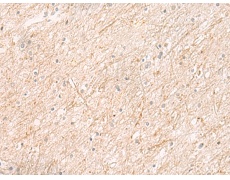|
Background: |
Tight junctions represent one mode of cell-to-cell adhesion in epithelial or endothelial cell sheets, forming continuous seals around cells and serving as a physical barrier to prevent solutes and water from passing freely through the paracellular space. These junctions are comprised of sets of continuous networking strands in the outwardly facing cytoplasmic leaflet, with complementary grooves in the inwardly facing extracytoplasmic leaflet. The protein encoded by this gene, a member of the claudin family, is an integral membrane protein and a component of tight junction strands. It is found primarily in the kidneys, specifically in the thick ascending limb of Henle, where it acts as either an intercellular pore or ion concentration sensor to regulate the paracellular resorption of magnesium ions. Defects in this gene are a cause of primary hypomagnesemia, which is characterized by massive renal magnesium wasting with hypomagnesemia and hypercalciuria, resulting in nephrocalcinosis and renal failure. This gene and the CLDN1 gene are clustered on chromosome 3q28. |
|
Applications: |
ELISA, IHC |
|
Name of antibody: |
CLDN16 |
|
Immunogen: |
Synthetic peptide of human CLDN16 |
|
Full name: |
claudin 16 |
|
Synonyms: |
HOMG3; PCLN1 |
|
SwissProt: |
Q9Y5I7 |
|
ELISA Recommended dilution: |
5000-10000 |
|
IHC positive control: |
Human tonsil and Human brain |
|
IHC Recommend dilution: |
25-100 |


 购物车
购物车 帮助
帮助
 021-54845833/15800441009
021-54845833/15800441009
